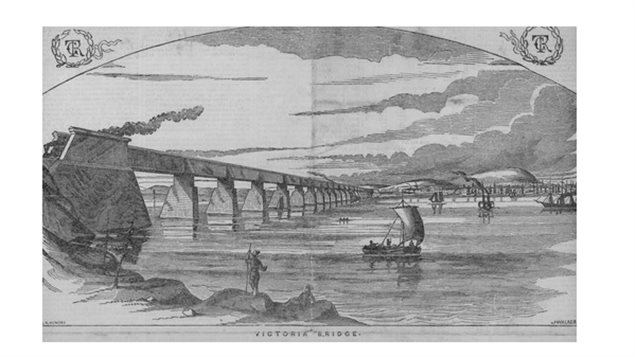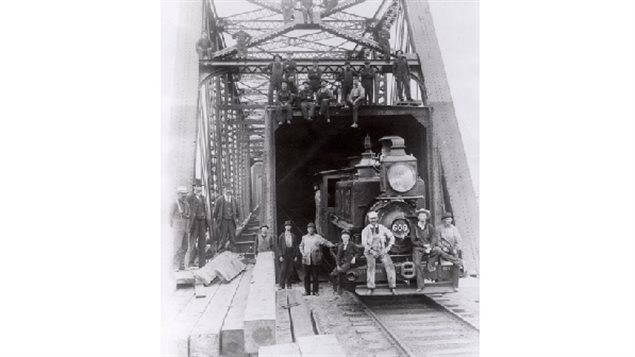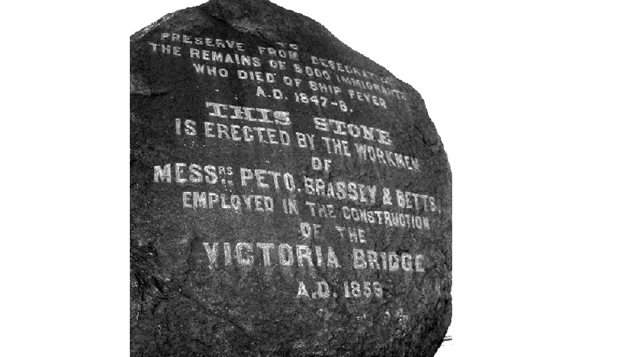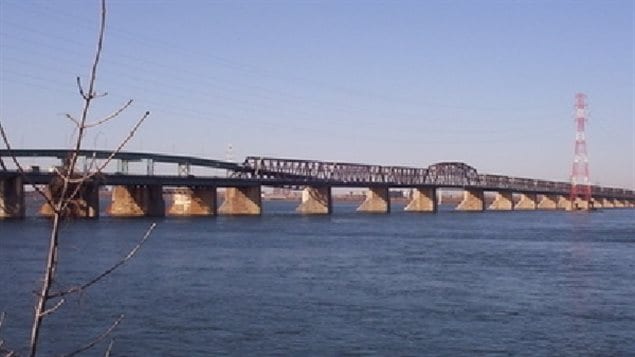In its day, and even before completion, the Victoria Bridge in Montreal was being hailed as an engineering marvel.
At some 3 kilometres long, it was also the longest railway bridge in the world.
Opened officially on this day, August 25, 1860, it remains in constant daily use to this day.
In the 1850’s crossing the mighty St Lawrence to and from the growing economic powerhouse of Montreal was slow and tricky. In summer, it was by boat across the powerful swirling current, and in winter, if conditions were right, by sled or other means across the ice. Crossing was almost impossible during transition seasons. A bridge to the communities on the south shore, and to the vast potential of US markets, was a must.
The brightest British engineers and builders of the day were hired to tackle the almost impossible challenges.

There would be 24 massive stone piers buried in the river bed and sharply pointed on the upriver side to break up ice and prevent subsequent dangerous pressure from massive ice buildup and current. This would be just one of the many innovations created to achieve success in the enormous task.
Indeed, many innovations and advances in bridge building, machinery (steam derricks), and actual design (ice breaking piers) were created specifically to deal with the challenges and as a result of this particular bridge project.
The quality of the design and work is attested to by the fact the piers and overall structure are still there today.
Begun in 1854, the celebrations for the structure began almost at the same time, including a banquet with music inside the first completed pier some twenty metres below the water level!

Then throughout its construction, other celebrations were held culminating in a massive fireworks display upon completion along with several days of balls and dances.
The original design structure was a giant tube with the railway running through it. Giant wrought iron panels were created in Britain, shipped across the Atlantic and assembled on the bridge.

In 1897-98, with its importance increasing, the bridge was modified and widened by the creation of a metal truss structure built around the original wrought iron tube. This would allow a second railway track and shoulders cantilevered out from the structure for pedestrians and wagon traffic. Once the truss was completed, the tube was dismantled. The piers were also modified at the time. Between 1909 and 1956 tramways used one of the shoulders of the widened bridge.

A great many of the local workers on the site were of Irish descent. During construction they discovered the buried remains of Irish immigrants who had fled the famine in Ireland, but died of so-called “ship fever” shortly after arrival. The sick and dying had been placed in what were dubbed fever sheds near the site where they had been isolated during the typhus epidemic of 1847.
The workers placed a huge black rock in commemoration near the entrance to the bridge.

Originally named the Great Victoria Bridge, in honour of Queen Victoria, it was rededicated as the Victoria Jubilee Bridge in 1897 some ten years after the actual 50 year golden anniversary date of her reign. In 1978 the name was changed to simply the Victoria Bridge (Pont Victoria).

Although freight and passenger trains had crossed the bridge starting in December, the official opening was on this date August 25, 1860. Her Majesty Queen Victoria had been invited, but she instead sent her eldest son and heir to the throne, the then still young Albert Edward, Prince of Wales, who laid the final stone in an elaborate ceremony.
The quality of the original design and work is clear in the fact that the bridge is still in constant heavy use by cars and trains well over 150 years later.
Additional information sources







For reasons beyond our control, and for an undetermined period of time, our comment section is now closed. However, our social networks remain open to your contributions.